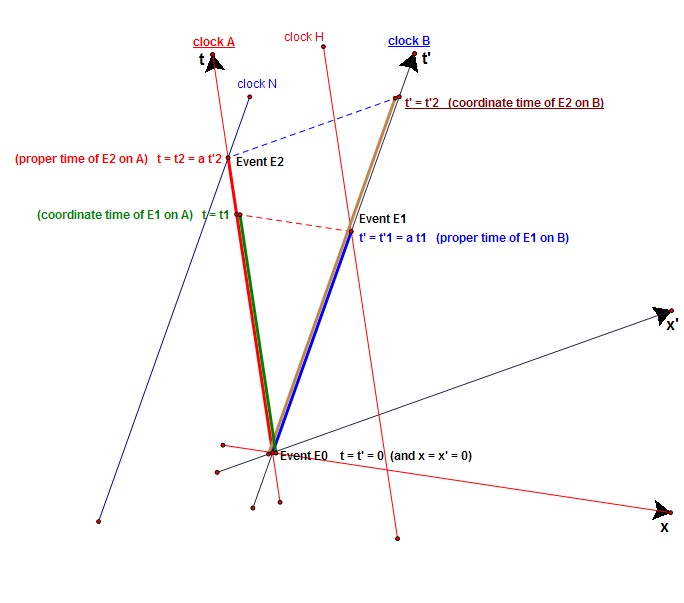This is an old revision of this page, as edited by DVdm (talk | contribs) at 14:41, 3 June 2013 (→A trivial refutation of one of Dingle's Fumbles (Ref: Talk:Herbert Dingle Archive): Darkened math colour to DarkGreen). The present address (URL) is a permanent link to this revision, which may differ significantly from the current revision.
Revision as of 14:41, 3 June 2013 by DVdm (talk | contribs) (→A trivial refutation of one of Dingle's Fumbles (Ref: Talk:Herbert Dingle Archive): Darkened math colour to DarkGreen)(diff) ← Previous revision | Latest revision (diff) | Newer revision → (diff)This...
|
A trivial refutation of one of Dingle's Fumbles (Ref: Talk:Herbert Dingle Archive)
On page 230 in this appendix to "Science At the Crossroads", Dingle writes:
- (start quote)
- Thus, between events E0 and E1, A advances by and B by by (1). Therefore
- ...
- Thus, between events E0 and E2, B advances by and A by by (2). Therefore
- Equations (3) and (4) are contradictory: hence the theory requiring them must be false.
- Thus, between events E0 and E1, A advances by and B by by (1). Therefore
- (end quote)
Dingle should have written as follows:
- (start correction)
- Thus, between events E0 and E1, A, which is not present at both events, advances by and B, which is present at both events, by by (1). Therefore
- Failed to parse (syntax error): {\displaystyle \frac{\color{DirkGreen}{\text{rate of clock not present at both events E0 and E1}}}{\color{Blue}{\text{rate of clock present at both events E0 and E1}}} = \frac{\color{<<DarkGreen}{\text{coordinate time of E1}}}{\color{Blue}{\text{proper time of E1}}} = \frac{\color{DarkGreen}{\text{rate of A}}}{\color{Blue}{\text{rate of B}}} = \frac{\color{DirkGreen}{t_1}}{\color{Blue}{t'_1}} = \frac{\color{DarkGreen}{t_1}}{\color{Blue}{a t_1}} = \frac{1}{a} > 1 \qquad \text{(3)}}
- ...
- Thus, between events E0 and E2, B, which is not present at both events, advances by and A, which is present at both events, by by (2). Therefore
- Equations (3) and (4) are consistent and say that any event's coordinate time is always larger than its proper time:
hence there is no reason to say that the theory requiring them must be false.
- Thus, between events E0 and E1, A, which is not present at both events, advances by and B, which is present at both events, by by (1). Therefore
- (end correction)

DVdm 12:18, 6 August 2007 (UTC)
 and B by
and B by  by (1). Therefore
by (1). Therefore

 and A by
and A by  by (2). Therefore
by (2). Therefore

